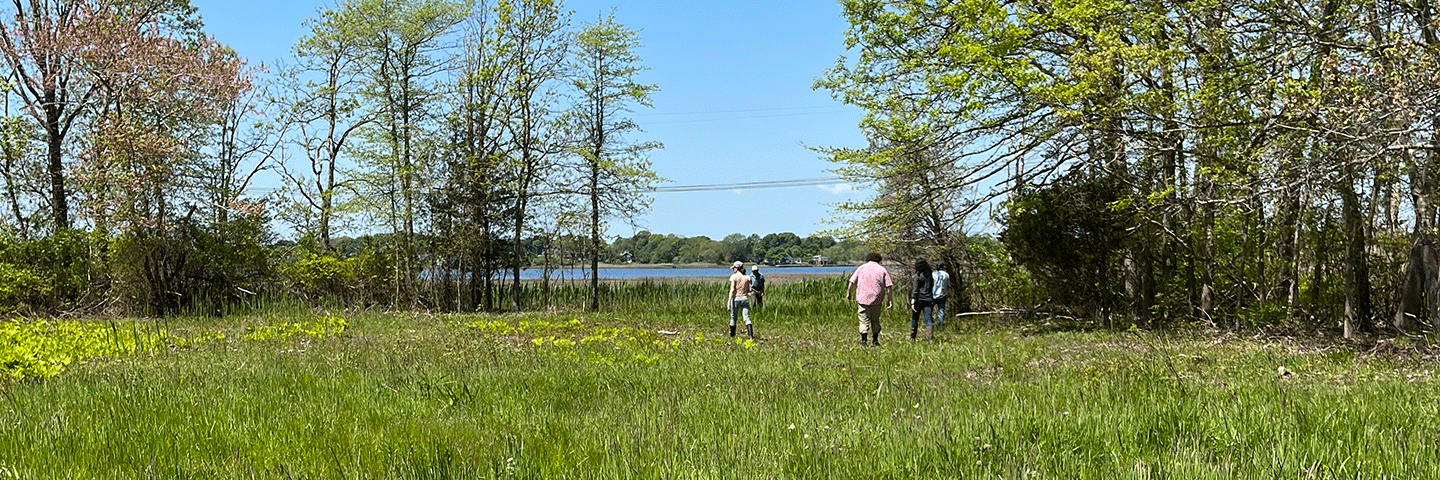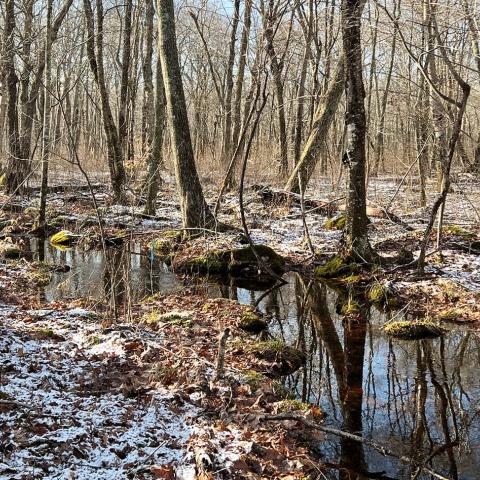
FY 2025 RI WRE General Ranking Criteria Questions
Section: Applicability Questions
- Did an eligible entity apply for ACEP WRE?
- Yes — Points: 0
- No — Points: 0
Section: Category Questions
- Is the application in the State of Rhode Island?
- Yes — Points: 0
- No — Points: 0
Section: Program Questions
- Review of easement value per acre:
- Less than $2500 per acre — Points: 15
- Between $2500-5000 per acre — Points: 10
- Greater than $5000 per acre — Points: 0
- Will the land be purchased Fee Simple by a land protection organization such as RIDEM, local land trust, or non-profit for additional protection and public benefit?
- YES — Points: 20
- NO — Points: 0
- Describe the type of future management of the easement and future potential costs to NRCS:
- Site will be passively managed by placement of easement — Points: 20
- Site will require limited management (mowing, additional plantings, invasive management) — Points: 10
- Site will need structural practice(s) and active on-site management — Points: 0
- Review the estimated restoration cost per acres based on the Preliminary Wetland Restoration Plan or Operation (PWRPO) and the engineering estimate:
- No restoration will be needed — Points: 20
- Restoration cost is less than 50 percent of estimated easement value — Points: 16
- Restoration cost is between 50-100 percent of estimated easement value — Points: 12
- Restoration Cost is greater than 100 percent of estimated easement cost — Points: 8
- Will the easement be on Tribal Land or land owned by a participant of a historically underserved (HU) group?
- YES — Points: 12
- NO — Points: 0
- Resource priority areas - Are the PLU(s) located in the SLAMM Area?
- Yes — Points: 20
- Otherwise — Points: 0
- Resource priority areas - Are the PLU(s) located in the State Forest Priority Area?
- Yes — Points: 8
- Otherwise — Points: 0
- Resource priority area - Are the PLU(s) located in Drinking water supply watershed (surface water)?
- Yes — Points: 25
- Otherwise — Points: 0
- Are the PLU(s) Located in the NRCS Source Water Priority Areas?
- Yes — Points: 10
- Otherwise — Points: 0
- Resource Priority Areas- Are the PLU(s) within 300 feet of a Cold Water Stream?
- Yes — Points: 20
- Otherwise — Points: 0
- What is the proximity of the proposed easement to state designated impaired waters?
- The impaired water is within or adjacent to the easement boundary — Points: 20
- The proposed easement flows to impaired waters and is within 100 feet of the impaired water — Points: 10
- Otherwise — Points: 0
- What is the percentage of the parcel with Prime or Statewide Important Soils?
- Parcel is 25 percent or less Prime or Statewide Important Soils — Points: 5
- Parcel is greater that 25 percent Prime or Statewide Important Soils — Points: 0
- Land that is currently enrolled in CRP in a contract that is set to expire within one year from the date of application or land under a CRP contract that is in transition to a covered farmer or rancher and such land is farmed wetland and adjoining land that has the highest wetland functions and values and is likely to return to production after the land leaves CRP?
- YES — Points: 5
- NO — Points: 0
Resource Questions
- Planners to identify the natural heritage and species criteria below: (Select all that apply)
- Eastern Diamondback Terrapin (Malaclemys terrapin) presence been has documented on the site — Points: 9
- Saltmarsh sparrow (Ammospiza caudacutus) habitat has been documented on the site — Points: 9
- The parcel falls within the Priority Watersheds for the Northeast Turtle Project (see Priority map) or either of the two RI priority turtle species, Spotted turtle (Clemmys guttata) or Wood turtle (Glyptemys insculpta) have been documented as present on this site — Points: 9
- The parcel does not fall within any natural heritage area and does not meet any species criteria — Points: 0
- Select the wetland priority type that applies for the proposed easement:
- Coastal Salt Marsh, Fens , Bogs, Vernal Pools, Atlantic white cedar, Wet meadows — Points: 21
- Otherwise — Points: 0
- Complexity and Diversity of Wetland Types:
- The proposed easement has 2 or more Rhode Island wetland types — Points: 2
- The proposed easement has only 1 wetland type — Points: 0
- Will the sites include identified TE species or State Species of Concerns?
- Site includes or intersects areas id by the Natural Heritage GIS layer — Points: 4
- Otherwise — Points: 0
- Will the restoration of the proposed easement include alternative communities?
- Wetland restoration will include NO alternative communities — Points: 4
- Wetland restoration will include alternative communities — Points: 2
- What is the parcels connectivity to beneficial adjacent land?
- Adjacent lands have the ability to provide SIGNIFICANT wildlife habitat that provide a high degree of benefit to the proposed easements (Site provides a migratory path between other suitable areas for key species) — Points: 12
- Adjacent lands have MODERATE ability to provide wildlife habitat (Site provides a migratory path between other suitable areas for key species) — Points: 6
- There are NO beneficial lands adjacent to the parcel — Points: 0
- What is the degree of hydrologic restoration to be completed based on the preliminary or final PWRPO?
- 100-50 percent of degraded areas of the eligible wetland will be restored — Points: 100
- Between 25-50 percent of the degraded areas of the wetlands will be restored — Points: 75
- Less than 25 percent of the degraded areas will be restored — Points: 20
- Select the number that is closest to the proposed WRE eligible easement size:
- Greater than or equal to 50 acres — Points: 5
- Between 25 and up to 50 — Points: 3
- Between 10 and up to 25 acres — Points: 2
- Less than 10 acres — Points: 0
- Select the number of the "Length of Riparian Area" that approximates to the property:
- Greater than or equal to 2640 feet — Points: 15
- Between 1000 feet and up to 2640 feet — Points: 10
- Between 500 feet and up to 1000 feet — Points: 5
- Less than 500 feet — Points: 2
- Environmental Consideration: Wetland Buffers (to determine this factor take the widest width on either side of the wetland that is eligible):
- Proposed Easement will allow for greater than 100 feet of buffer — Points: 7
- Proposed Easement will allow 100 to 50 feet of buffer — Points: 5
- Proposed Easement will allow for less than 50 feet of buffer — Points: 1
- Proposed Easement will have no buffer — Points: 0
- Buffer condition with respect to invasive plants:
- Proposed easement buffer has minimal invasive species and will require no restoration — Points: 3
- Otherwise — Points: 0
Contact
Additional Information
Agricultural Conservation Easement Program - Rhode Island
The Agricultural Conservation Easement Program (ACEP) helps landowners, land trusts, tribes, and other entities to protect, restore, and enhance wetlands, grasslands, and working farms and ranches through conservation easements.
Learn MoreWetland Reserve Easements - Rhode Island
NRCS in Rhode Island is now accepting applications for ACEP Wetlands Reserve Easements (WRE). Applications that meet eligibility and ranking criteria in ACEP-WRE targeted areas received by Dec. 20, 2024, will be considered for our second round of FY 2025 funding.
Learn More

